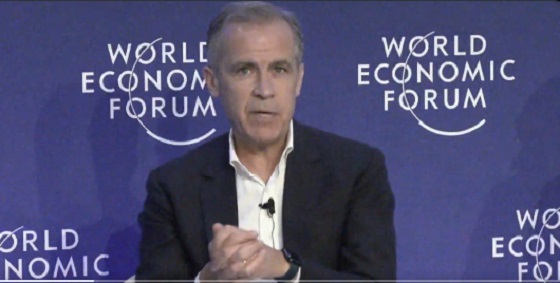Christopher Rufo
America’s Verdict


What the Daniel Penny acquittal means for America
A New York City courtroom Monday issued a stunning verdict: Daniel Penny, a veteran US marine who restrained a threatening homeless subway rider named Jordan Neely, who later died in police custody, is not guilty of negligent homicide. And the verdict was not just about Penny. Make no mistake: the Black Lives Matter era of “restorative justice” is over and the real spirit of justice is returning to America.
Penny’s trial captured public attention because it dramatically emblematized this critical cultural faultline. Most immediately, it symbolized a recurrent theme in New York City about the failures of law enforcement, and the appropriate response to criminality. But it was also a story that the Left sought to turn into a racial morality play by repeating the BLM playbook they applied to the death of George Floyd, to Trayvon Martin, to Michael Brown and countless others.
In this story, Daniel Penny (“the white man” in the loaded description of the prosecutor Dafna Yoran) was a racist white man, who cruelly hunted down and killed an innocent black man (a “Micheal Jackson impersonator”) who was peacefully riding the subway. In this telling, neither man is an individual; rather, each is a symbol of a system of racist white supremacy, organized around enacting violence on black bodies, for no reason, in the United States, and across the world.
The first imperative of restorative justice is to recognize this crucial ideological context; a point which Penny’s hyper-ideological prosecutor Dafna Yoran made explicit in a widely circulated video in which she boasted of reducing a felony murder charge in a previous trial to a manslaughter charge because she “felt sorry” for the trauma which the African-American killer had endured.
Daniel Penny, naturally, received no such considerations. In his case, the restorative task was to scapegoat “the white man” in the service of advancing a radical pro-crime agenda, consistent with defunding the police and turning the US criminal justice system into a politically organized system of justice comparable to the two-tier justice system that now exists in the UK.
This was a task that was pursued both inside and outside the courtroom. As with the trial of Derek Chauvin in Minneapolis following the death of George Floyd, professional activists were mobilized to protest on the street outside the trial with the intention to manipulate proceedings: witnesses reported that the shouting of the activists were audible inside the courtroom. But this time, the jury did not surrender to pressure.
Jordan Neely was, in fact, like George Floyd: both were violent criminals with a long record of antisocial behavioral problems who suffered from drug problems, and eventually died under troubling circumstances. But Derek Chauvin’s jury failed in its duty to separate the facts from ideological myths, and failed to stand up to political pressure. Chauvin was convicted by a jury frightened into complicity, and effectively thrown to the mob.
By contrast, in New York Monday, another conception of justice prevailed. Despite the activists ringing the courtroom, a hostile media chumming the waters, and a highly irregular legal procedure which saw the prosecution withdrawing one of Penny’s charges on Friday in order to avoid a mistrial and seek conviction on a lesser charge, the jurors retained their composure, and stuck to the facts and the law. Whatever fear they may have felt, they overcame it, and Penny was correctly found not guilty.
What will happen next? My own suspicion is that the verdict will not generate anything like the violence, riots, and disorder that followed the death of George Floyd. Americans are finished with the failed regime of the Left. The past four years have clarified what “social justice” really means and exhausted all remaining patience for granting activists the benefit of the doubt. The extraordinary shamelessness of Jordan Neely’s father in launching a civil suit against Penny over the death of a son he didn’t raise exemplifies the moral emptiness that was formerly, by many, mistaken for social justice.
In reality, “social justice” was never about justice: it was about the political subversion of justice to achieve pathological and ideological ends. The contrast with Penny himself could not be more striking. Penny is not merely not guilty, he is an unambiguous hero, who correctly understood and carried out his duty, with great courage, in a dangerous situation. He believed that it was his duty to use his training to protect women and children from a violent individual with a previous record of subway assault, and he was right to do so.
Today’s verdict marks the end of an era. BLM, which seemed unstoppable four years ago, is finished. Its activists are discredited, and its grip on the public imagination is broken. No doubt the violent spirit of the movement will seek to resurface in the future, but a brutal and stupid decade of moral and judicial corruption has come to a close.
With its passing, the opportunity returns to truly confront the problems that have plagued American cities for a generation. Penny’s heroism should never have been necessary because Jordan Neely should never have been riding that train. Neely himself was failed by BLM and the ideology of social justice, just as Penny was persecuted by it: it was also social justice which, from misguided ideas of compassion, stopped Neely from getting the treatment he needed.
The correct moral attitude, as well as the right social policy, is to dismantle this system entirely—in academia and media, where it generates its alibis, but above all in criminal justice. That means holding the attorneys responsible for this shameful prosecution accountable, returning to the system of “broken windows” policing that made New York under Giuliani the safest big city in America—and extending that system across the rest of the United States.
This article has been provided free of charge but it takes a lot of effort to produce journalism of this quality. We are grateful for those who consider supporting these important journalistic efforts. Thank you for considering a free or paid subscription.
This article was originally published in IM—1776.
Christopher Rufo
Radical Normie Terrorism

Why are Middle American families producing monsters?
In the 1960s and 1970s, America witnessed a wave of political terrorism. Left-wing radicals hijacked airplanes, set bombs in government buildings, and assassinated police officers in service of political goals. The perpetrators were almost always organized, belonging to groups like the Weathermen or the Black Liberation Army. These groups demanded the release of prisoners, denounced capitalism, or called for violent revolution against the United States. Their members were radical but largely lucid, justifying their actions with appeals to a higher cause.
In recent years, a new form of terror has emerged: decentralized, digitally driven violence organized not around coherent ideologies but around memes, fantasies, and nihilistic impulses. The perpetrators of this low-grade terror campaign do not belong to hierarchical organizations or pursue concrete political aims. More often, they come from ordinary families and lash out in acts of violence without discernible purpose.
At the close of this summer, two such incidents underscored the trend: the attack on schoolchildren at Annunciation Catholic Church in Minneapolis, Minnesota, and the assassination of Charlie Kirk in Orem, Utah. Though the first resembled the school-shooter archetype and the second evoked a JFK-style political assassination, both share psychological and sociological roots that make them more alike than they initially appear.
The new terror campaign is defined by a particular kind of psychopathology. It is perhaps tautological that anyone willing to kill innocent schoolchildren as they are praying or to assassinate a popular podcast host in broad daylight is pathological. But in these cases, both alleged killers—Robin Westman (formerly Robert Westman), and Tyler Robinson—left behind several warning signs that were psychological in nature.
Westman, the alleged Annunciation shooter, left a diary detailing fantasies and inner turmoil related to his transgender identity. While he decorated his weapons with pithy slogans, including “Kill Donald Trump,” “Burn Israel,” and “Nuke India,” these were memes and ironies, designed to give the appearance of ideology, concealing a potentially more disturbing motive. He was in the throes of a transgender identity crisis and had fantasized about being a demon and wanting to watch children suffer. The ideology was a brittle shell around a deeper emptiness that could only be satisfied with horror.
Robinson, Charlie Kirk’s alleged assassin, reportedly spent thousands of hours playing video games, had an account on sexual fetish websites, and played a “dating simulator” game involving “furries,” muscular cartoon characters that are half-animal and half-man. Officials claim that Robinson had moved in with a boyfriend who identified as transgender and to whom he confessed the crime. Like Westman, Robinson inscribed slogans on the shell casings he used in the assassination, including a message about noticing the “bulge” of male genitalia through women’s clothing. The fact that Robinson waited until Kirk began to answer a question about transgender mass shootings seems to reinforce the point.
In addition to their shared fixation with transgenderism, both Westman and Robinson immersed themselves in peculiar digital subcultures. These online spaces were not hubs of Marxism—or even transgenderism, strictly speaking—but of memes, attitudes, copycatting, in-jokes, and irony that, in certain cases, spilled over into violence. Both men allegedly acted out their fantasies not to advance a coherent ideology shaped by study or political organizing but to gratify an obscure personal urge.
In a note to his transgender boyfriend, Robinson wrote that he wanted to stop Charlie Kirk’s “hate.” While this may hint at a nascent ideology, the remark was perfunctory and incidental to the crime. Robinson did not seek to change policy or dismantle a system of government. He seems instead to have wanted to kill a man who spoke openly about transgenderism and embodied a vague notion of “hate.”
Another striking pattern in these crimes is that, at least from initial reporting, the alleged perpetrators came from ordinary, middle-class, Middle American families. Westman’s mother, for example, was active in her Catholic parish in Minneapolis. These were not visibly broken homes but functional households that nonetheless produced monsters—what we might call “radical normie terrorism.”
Radical normie terrorism poses a new challenge for law enforcement. As a veteran FBI agent told me, domestic law enforcement has no systematic program to identify, assess, and respond to this kind of online radicalization. The Bureau still relies on old-fashioned methods—processing tips, knocking on doors, interviewing witnesses—and, in most cases, cannot intervene against disturbed individuals until after they strike.
These acts of terror reflect something dark in our nation’s soul. The perpetrators were so dissatisfied with their middle-class lives that they sought to destroy the highest symbols of their society: murdering children in church pews, an attack on God; and murdering a political speaker in cold blood, an attack on the republic.
Stopping similar killers in the future will be a major challenge. The Internet is hard to police and culture hard to reform. But we should keep the stakes in mind as we work to protect the things we love and grapple for a solution, however elusive it may seem.
Invite your friends and earn rewards
Christopher Rufo
Charlie Kirk Did It All the Right Way

He exposed the lies at the heart of radical left-wing ideologies—and paid the ultimate price for telling the truth.
Like almost everyone in my circle, I have spent the better part of the last week in a stupor. The news of conservative activist Charlie Kirk’s assassination has left all of us who counted him as a friend or colleague in a state of shock and sadness.
I did not know Charlie Kirk well. But I had met him in various green rooms, appeared on his radio program, and worked with him to find capable staffers for the Department of Education. He was always genuine, idealistic, and dedicated to the cause. I’m still astonished by all that he accomplished in such a short period of time. He built an enormous organization, turned himself into a media star, advised the president of the United States, and built a beautiful family—all by age 31.
When we are in the fray of day-to-day politics, it is easy to get consumed by each new headline and triviality. But Kirk’s death marks a pivotal moment, requiring deeper reflection. His life, and tragically his death, reveal some profound truths about the man and about America.
First and foremost, Charlie Kirk did it all the right way. He was a conservative willing to wade into controversial territory. But he was always guided by the idea that debate is the great clarifier and that, in a democratic society, persuasion is the primary means of political change. He set up tables on campus. He debated his opponents. And he believed he could win through the ballot box.
Kirk’s death, and the subsequent reaction to it by the radical Left, underscored the arguments he had made during his time on the stage. For nearly ten years, Kirk had argued that transgender ideology, especially when paired with experimental medical procedures, would result in disaster. From the reports now emerging, it appears likely that the alleged assassin, Tyler Robinson, was radicalized online into anti-fascist and transgender politics. In their most extreme forms, both lines of thinking advocate a nihilistic embrace of violence—the antithesis of Kirk’s approach.
In fact, when he was murdered, Kirk was answering a question about the relationship between transgenderism and mass shootings, a phenomenon that seems to have accelerated in recent years. Kirk sought to engage his opponents in debate; his killer, quite possibly inspired by the trans-radical movement, sought to end that debate with a bullet.
The reaction to Kirk’s death by the mainstream Left has been equally troubling. Thousands of Americans, including students, professors, and even active-duty military members, have publicly cheered his assassination. Some have called for further violence against conservatives. Though I have covered left-wing radical movements for years, I was surprised by the number of people in the “helping professions,” including teachers and doctors, who embraced violent rhetoric.
How should conservatives respond? First, by drawing a line that Kirk himself exemplified: debate is healthy; violence is unacceptable. I’m glad to see that some institutions have terminated the employment of those who cheered on Kirk’s murder.
Contrary to the criticism that this represents a form of right-wing “cancel culture,” these firings were warranted. During the “woke” era, left-wing social media mobs sought the social annihilation of teenagers who sang rap lyrics and a Latino utility worker who cracked his knuckles the wrong way—examples of extreme and unjustified social policing. By contrast, a public school dismissing a teacher for applauding political assassination is a fair consequence.
All societies require boundaries. If there is no social sanction for celebrating violence, America will become a more dangerous place. Social trust, already fragile, will collapse.
On the question of transgender ideology, more information will emerge about Kirk’s alleged killer. But more than enough evidence already exists for federal law enforcement to consider radical transgender ideologues a threat to the civil order of the United States—much like white nationalists, neo-Nazis, militant “anti-fascists,” and other hateful groups. Some figures in the Trump administration, such as policy adviser Stephen Miller and Vice President J. D. Vance, have already indicated that they are ready to take action to enforce the law against violent movements.
Charlie Kirk sacrificed his life for truth. We should honor his legacy by standing firmly on principle, engaging in political debate, and, when necessary, enforcing the law against those who would organize violence in the name of politics.
-

 Alberta2 days ago
Alberta2 days agoB.C. would benefit from new pipeline but bad policy stands in the way
-

 Uncategorized2 days ago
Uncategorized2 days agoTrump Admin Establishing Council To Make Buildings Beautiful Again
-

 Economy1 day ago
Economy1 day agoTop Scientists Deliberately Misrepresented Sea Level Rise For Years
-

 Energy21 hours ago
Energy21 hours agoCAPP calls on federal government to reset energy policy before it’s too late
-

 Business22 hours ago
Business22 hours agoTrump Raises US Tariffs on Canadian Products by 10% after Doug Ford’s $75,000,000 Ad Campaign
-

 International2 days ago
International2 days agoUS Deploys Gerald Ford Carrier Strike Group To Target Cartels
-

 Frontier Centre for Public Policy2 days ago
Frontier Centre for Public Policy2 days agoChurches Are All That Stands Between Canada And Tyranny
-

 Alberta2 days ago
Alberta2 days agoAlberta introduces bill allowing province to reject international agreements











